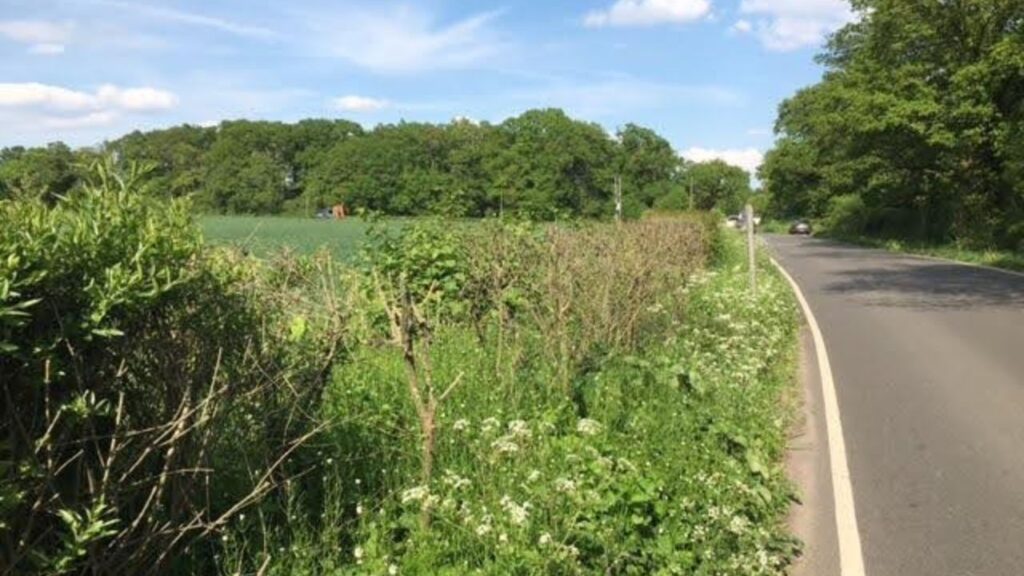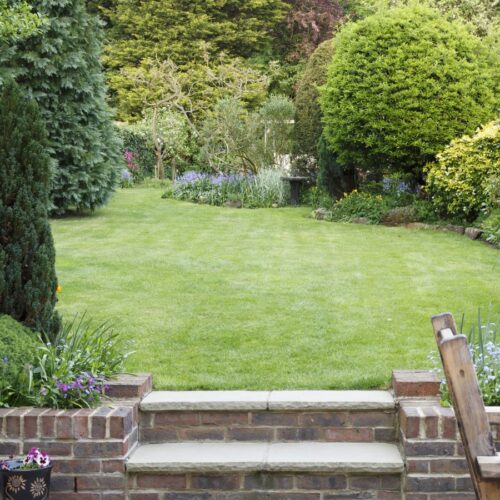Developing land with invasive plants growing on it can have more legal implications than you initially realised.
Originally native to East Asia, Japanese knotweed is an invasive non–native species (INNS) that is particularly difficult to eliminate. Cutting down the plant is ineffective because of the plant’s large rhizome (root) structure, which can go dormant for extended periods. Excavation of the infestation allows construction works to proceed without any delays..
Over the years, perception of the challenges knotweed causes has led to a stigma for properties that have knotweed or are located near untreated knotweed; it is unsettling because of the effort and cost of treating it.
With this in mind, we have put together a guide to Japanese Knotweed, discussing its challenges, characteristics, and ways to eliminate the invasive plant
Background and History
Japanese knotweed (Reynoutria japonica) was brought to Britain from Japan in the mid-nineteenth century as an ornamental garden plant.
It has now become widespread in a range of habitats, particularly roadsides, riverbanks and derelict land where it can cause serious problems by displacing native flora and with the potential to cause structural damage. It spreads rapidly in the wild by natural means or as a result of human activity.
Japanese knotweed is listed under Schedule 9 of the Wildlife and Countryside Act 1981 with respect to England and Wales. As such, it is an offence to plant or otherwise cause Japanese knotweed to grow in the wild. Under the Environmental Protection Act 1990, Japanese Knotweed is also classified as controlled waste.
Types of Japanese knotweed
There are several species of knotweed in the UK, with Japanese knotweed being the most common:
- Giant knotweed (Reynoutria sachalinensis, formally Fallopia sachalinensis)
- Himalayan knotweed (Persicaria wallichii),
- Dwarf Japanese knotweed (Reynoutria japonica var. ‘Compacta’, formally Fallopia japonica var. ‘Compacta’)
- Bohemica (Reynoutria japonica x bohemica), a hybrid knotweed
How to spot Japanese Knotweed
Japanese knotweed is frequently mistaken for common plants such as Lilac, Broad-leafed Dock, Dogwood and Russian Vine; however, it can be identified by its creamy white flowers, bamboo-like stems, and shovel-shaped leaves.
In spring, the reddish-purple fleshy shoots emerge from crimson-pink buds down at ground level, either from the ‘crown’ or the rhizomes spreading out from the original plant. The buds then grow into new shoots that look similar to asparagus spears!
Finally, it grows into the familiar ‘bamboo-like canes’, which can grow up to 10cm a day and 3m tall by the summer. They have characteristic purple flecks and produce branches from nodes along their length in a characteristic zig-zag fashion.
This growth is produced from the energy and nutrients stored in the plant’s roots (rhizomes), which have been generated from the previous year’s growth. The energy collection and storage process is repeated yearly, and the stand grows ever larger each season. It has been reported that these rhizomes can lay dormant underground for up to 20 years, helping to fuel its fearsome reputation.
Japanese Knotweed cycle throughout the year
| Spring | Japanese Knotweed grows fastest during Spring and begins to spring new shoots, making them a lot easier to spot.
Look out for:
Once spring is underway, Japanese Knotweed shoots take on a greener colour and is easier to spot due to accelerated growth. |
| Summer | Growth accelerates significantly from June into late summer, making the plant much more apparent.
Look out for:
|
| Autumn | As autumn approaches, Japanese knotweed retreats, leaving behind hollow stems as a reminder of its destruction until the cycle resumes again.
Look out for:
|
| Winter | Knotweed lays dormant during winter, but assuming the problem has simply gone is unwise.
It is common that the canes persist throughout the winter and into the spring |
Control measures
Various control measures can be used to manage the Japanese Knotweed on a site, which should be undertaken by appropriately trained operatives.
- In-situ treatment using approved herbicides
- Controlled contaminated soils from the site to an approved facility using an approved waste carrier.
- Burial at either 5m with a cap or 2m completely encapsulated.
- Stockpiling of the contaminated soils
- Soil screening/sieving with potential re-use on-site
- ‘Installation of Root Barriers’ where all contamination can’t be removed.
Strict biosecurity measures should be enforced to prevent the accidental spread of the Japanese Knotweed. All plants, vehicles, equipment, and clothing must be thoroughly cleaned before leaving contaminated areas. Cleaning should take place in the location (or immediate vicinity) where the soil or living material originated before equipment and personnel leave the buffer zone.
Using herbicide treatment to control Japanese knotweed
Herbicide treatment is regularly used as this is usually the most cost-effective option.
The treatment is carried out in situ, which limits the Japanese Knotweed’s ability to spread around the site or further afield. However, herbicide treatment shouldn’t be used in isolation where there is likely to be future soil disturbance around the infested area. If this option is used, achieving the desired results may take many years.
There are also additional legal requirements around using herbicides adjacent to any watercourses.
The herbicide should only be applied by suitably trained and qualified operatives who have expert knowledge of the timing and use of herbicides. In addition, all operatives applying any chemical should ensure the work doesn’t damage the environment.
The photo below shows an example of where a herbicide was applied to Japanese Knotweed in the summer of last year. The weed was growing in a hedgerow adjacent to a country road.

Today, the Japanese Knotweed growing within the hedge appears to be being controlled, but as a consequence of these spraying works, the hedge itself has been killed. So, not only do we have environmental damage, which is the loss of natural habitat, but we can also see stands of Japanese Knotweed growing on the opposite side of the hedge.
Although herbicide treatment often takes several years to be effective, and some growth may be seen in subsequent years following the treatment, in this instance, a different delivery method for the herbicide could have been used. A more targeted approach, including stem injection or weed wiping, rather than spraying, would have ensured any damage to the environment was minimised.
When appointing contractors to assist with the control and management of Japanese Knotweed, always ensure that they have qualified and trained staff and are members of reputable organisations, including the Property Care Association. This will help ensure a better outcome for your project and that care and consideration are given to the environment.
What happens if you neglect Japanese Knotweed?
Identifying Japanese Knotweed as soon as possible is crucial, particularly for homeowners and developers, as neglecting the invasive species can have severe and costly repercussions.
Although having knotweed on your property is not illegal, allowing it to spread is, and a penalty can include fines of up to £5,000. According to the Department for Environment, Food, and Rural Affairs’ legal guidance, it would be illegal to engage in careless or irresponsible behaviour, such as disposing of contaminated soil improperly and allowing knotweed to spread. Furthermore, the Environmental Protection Act of 1990 deems any soil containing knotweed as “controlled waste,” imposing legal obligations to take all reasonable steps to ensure it is appropriately dealt with. Only licensed operators can dispose of contaminated soil.
We ensure our clients can get an early start on their plans to control Japanese Knotweed.
At Thomson Environmental Consultants, we provide a specialist ‘one-stop shop’ solution for invasive plant species management. Our team is highly skilled and experienced in controlling and managing Japanese Knotweed, with an exceptional track record of working on national infrastructure projects, commercial and housing development sites, flood defence, rail, highways, and renewables, as well as for domestic customers.
Our comprehensive approach, including the availability of Certificated Surveyors of JKW (CSJK) accredited by the Property Care Association (PCA) and Ecologists who are skilled and proficient in identifying this and any other invasive non–native species (INNS) that may be present on your site, will effectively address your INNS problems.
We are also able to develop management and remediation plans for the site, and we have the ability and experience to complete all of the recommended works using qualified and trained personnel, leaving you free to enjoy the wonders of spring!
You can rest assured that we have all your needs covered.
Find out more about invasive plant species consultancy, as well as our remediation and treatment services here, or get in touch with our team for help and support.











